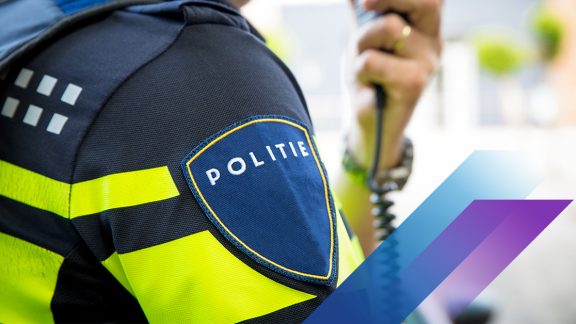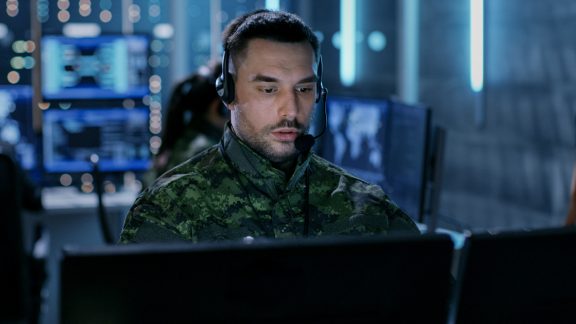Police forces face difficult, high-stakes decisions every single day, often held back by limited resources. But technology is here to change everything. We explore how frontline officers can be better equipped to create a safer environment for all.
More time in the field means more time to make a difference where it matters. Demands are mounting and officers need to free up time to get out there. Embracing technology not only allows them to do this by working more efficiently, but it also offers huge potential to restore society’s trust in policing as a force for safety and a lever for a prosperous society. Smart automation and analytics have powerful applications to make this happen. Maximising time in the field and empowering officers with the information they need within reach, technology is proven to relieve daily pressures and provides the tools to make strategic decisions instantly.
The practical benefits are paramount to increasing protection globally. Providing an essential service to our communities, everything from mobile apps to IoT-driven wearables will play a key role in keeping our nations secure while upskilling teams along the way.
Mobilised, digitised & protected
Rugged devices banish the need to go back and forth to the station to retrieve data – a task that typically takes an hour or more every single day. These devices contain all the data frontline officers need, when they need it. Built to withstand extreme conditions, they’re tough enough to take on challenging environments while keeping frontline workers in contact with command, dispatch, fellow officers and even first responders. If an officer is down in an incident, automated data sharing can connect the critical incident information to emergency services at the push of a button – protecting police teams and ensuring everyone’s in the know when they’re on-the-go.
Better practices, backed by big data
On-scene information can be uploaded rapidly to keep law enforcement teams informed and devices can sort, review and analyse the data from different sources. While harnessing automation to fulfil these processes not only cuts time, it also crucially reduces the impact of human error. The result transforms stacks of paperwork into the ability to make smarter split-second decisions and tackles the pressing issue of three-month backlogs on investigations now averaged by law enforcement agencies.
Recognised by The US Department of Homeland Security as the way forward for managing data efficiently, they’ve set a key objective in 2021 to employ machine learning and artificial intelligence technologies to improve their processes, including automating workflows, data capture and optical character recognition. And they’re not alone in the drive to do more with data, quicker and more reliably. The latest State of Policing Report from Her Majesty’s Inspectorate of Constabulary and Fire & Rescue Services (HMICFRS) highlights how the UK police force urgently need to embrace AI to analyse the vast amount of data on digital devices. Chief Inspector Tom Windsor directly instructed forces:
“With the enormous capability and potential of AI, the police could and must do much more. The opportunity here is not only to get machines to do faster what the police already do. It is also to use technology to achieve police objectives in ways we have not even thought of yet.”
Streamlining the frontline
It’s clear that law enforcement must look at new ways of working to thrive in today’s environment. Tools such as facial recognition technology, body cameras and speech recognition are proving to be essential tools in an officer’s arsenal. Day to day they’re used in capturing exact encounters and incident reporting to move mission-critical information forwards at speed. Augmented reality glasses are also innovating the way teams analyse situations, giving officers the power to see pertinent information about prior calls and even assess the infrastructure of a building to find the exits.
Chinese police patrolling the Zhengzhou East high-speed rail station in the Henan province employed AR glasses in a pilot project in 2018 to effectively identify suspects. Automatic facial recognition linked to a centralised database successfully helped them compare people they interacted with against a list of fugitives. The Moscow police force followed in their footsteps by supporting frontline workers with the glasses – a move that helped them catch more than 180 criminals during the World Cup.
Predictive policing: in control in the field
Big data and advanced analytics form the foundation for real AI. Used in the likes of robots and drones to track crimes from a distance, catch evidence and identify people, it supports the Chula Vista police who use drones to respond to as many as 15 emergency calls every single day. Connected drones also work alongside officers, so they need never go completely alone into a situation as the drones stream their location, capture audio-visual footage and send distress signals. But while these advancements hold a world of promise for streamlining in-field practices, they necessitate reliable and secure use of very big data.
IT from VMware functions as an amplifier of capacity for these advanced analytics, while unlocking predictive capacity. We help build cloud native apps and evolve existing apps making off-the-shelf components readily available to teams in a curated, customised and secure form. With our hands-on guidance, agencies can put these innovations into practice.
Fight crime with future-ready tools
Welcoming digital innovations is vital in restoring trust, resilience and strength in the people who protect our communities. Technology is the cornerstone for delivering safe and prosperous nations. If you’d like to discuss any of the issues raised in this blog or explore what bespoke cloud native applications VMware could deliver for you, please get in touch.




